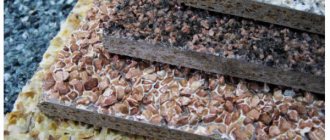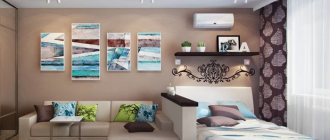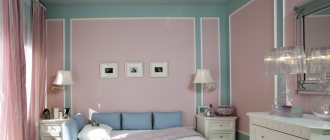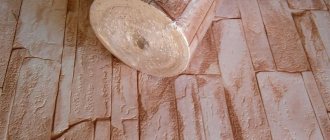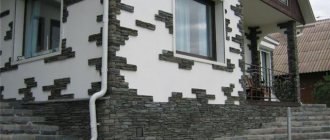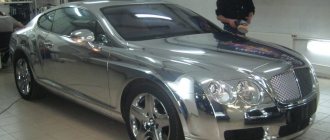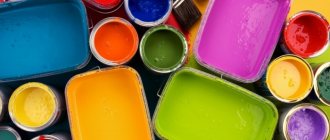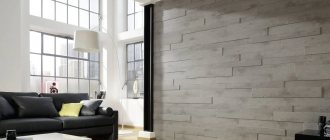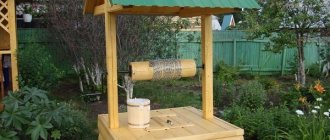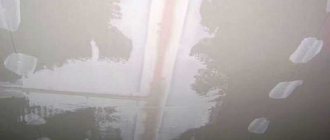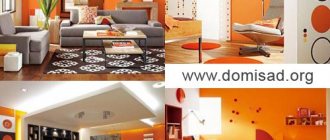Description
Mirrors in interiors are used not only for their intended purpose, but are also an important tool for visual adjustment of space.
With the right choice and location, it can be used to expand or reduce the room and adjust the layout.
When choosing this finishing option, it is important to choose the right:
- type of panels;
- location;
- room lighting, set it correctly.
Peculiarities
Thanks to mirror panels, you can improve the illumination of the room and reduce the number and intensity of lighting devices. Visually, the room becomes more spacious, brighter , and a feeling of blurred boundaries appears. You can also control the accents in the room, focusing attention on certain details or areas.
Most types of mirror panels provide additional sound insulation. In addition, they also have a direct mirror function. When using mirror panels, it is important not to forget that any contamination will be very noticeable. This is especially true in the kitchen. Therefore, it is worth paying attention to timely cleaning. This can be easily done using regular glass cleaning products.
Where is it recommended to use?
Mirror panels are often used for decoration in:
- shops;
- offices;
- studios;
- fitness clubs;
- night clubs.
In residential areas they are used in:
- bathrooms and shower rooms;
- offices;
- kitchens;
- hallways
Mirror panels can be used for both wall and ceiling decoration . In this case, you need to follow the recommendations for the surface: it must be perfectly flat. The slightest curvature can lead to panels not joining together during installation, image distortion and breakage.
When used in a bathroom or shower room, it is important to pay attention to the resistance of materials to moisture. Many manufacturers have mirror panels designed specifically for rooms with high humidity.
Design techniques
There are many design techniques using mirrors and mirror surfaces.
- Light shades for the walls for decorative finishing and mirror tiles, which are best placed on the wall opposite the window, will help to visually enlarge and expand the room. This way, natural light will be reflected from all surfaces and will create the illusion of more space.
- If the room, on the contrary, is too spacious, then mirror panels will also come to the rescue. In this case, designers advise using tiles from mirrors and frames. Due to this, the reflection will be interrupted, which will visually narrow the space.
- The mirror surface should be placed where it can create the illusion of the presence of a stranger. From this point of view, the best location would be on the wall with a doorway, behind the sofa.
- Some types of tiles can also be used to decorate curved surfaces, such as arched openings.
Houses with mirrored facades - connecting with nature
Mirrored facades cannot fail to impress. On the one hand, reflecting the world around, the mirror walls serve as camouflage for the building behind them, which seems to become part of the surrounding landscape. On the other hand, having realized that there is a whole house in front of you, you will definitely not remain indifferent! We present to your attention some crazy buildings with mirror facades.
Buildings with mirrored walls reflect the landscape around them so much that they can become almost invisible. They always look different - depending on the weather, time of year and surrounding objects. So, for example, in winter the façade will become white, in rain - lead-gray, and in good weather it will reflect the sun and clouds in all their diversity of forms.
An unusual building both in form and execution
The mirror facade is ideal for buildings located in nature. Forests, mountains and lakes reflected on the walls of the building make the house an element of nature, inseparable from the landscape.
Mirrored facades in parks
The same goes for parks. Agree, in the midst of a riot of greenery and the luxury of nature, there is no place for concrete. The mirror facade does not disturb the harmony of the surrounding world, allowing nature to fully reveal itself.
Mirror facade in urban architecture
Modern architects are increasingly resorting to mirrored facades. This solution looks especially good on buildings of unusual shapes and clear lines. Of course, cities do not have beautiful landscapes that could be reflected in the walls of these buildings, but even simple street lighting and car headlights create interesting lighting effects.
Mirror facades are a feature of modern style
The designers of the Museum of Contemporary Art in Cleveland, Ohio, opted for a mirrored facade that harmonizes with the building's shape. There are several possibilities for “playing” with reflections, which we will present later.
Materials for mirror facades: polished steel
Different materials allow you to achieve different effects. For example, polished steel allows you to adjust the intensity of the reflection. In this case, the effect depends on the depth of polishing - the better the surface is polished, the sharper and clearer the image it gives.
Materials for mirror facades: mirror glass
The most powerful effect is achieved using mirror glass. People inside the building can clearly see the entire street through glass walls, while remaining invisible from the outside, which is especially important for residential premises. A similar effect is achieved using a mirror film glued to glass.
Materials for mirror facades: aluminum plates
When building residential buildings, customers often prefer a more diffuse, not quite mirror effect. Of course, you can’t see the street through aluminum plates, but this material complements houses with flat roofs in a modern style.
Modern facades with a mirror effect are dangerous for birds
Mirrored facades are dangerous for flying birds who do not understand where the sky ends and the house begins. Therefore, in Western countries, animal activists oppose mirrored facades. The problem is solved with the help of protective nets or special ultraviolet coatings.
Urban projects with mirror facades
Many projects of new modern buildings in big cities include mirrored facades. An example of this is the extension project to the Boijmans-van Beuningen Museum in Rotterdam. The sketch shows a large bowl-shaped warehouse with a roof garden and a mirrored façade.
Mirrored facades create interesting optical effects
This building is an installation by an American artist, which is specially created to evoke an optical illusion. The facade design is decorated with alternating lines of wood and glass. The door and window have an absolutely flat reflective surface, as if it were an extension of the desert.
"Transparent" house in the desert
The installation is located in the Californian desert, and its effect is the illusion of a transparent house. In addition to this, the windows and door are equipped with LED lights that glow in the dark in various colors.
A house with a mirrored facade becomes part of the landscape
Two Scottish students have designed a small house located in the middle of a national park. Thanks to the mirror facade, the house merges with the surrounding nature.
Chameleon facade made of polished steel
The mirror effect is achieved using polished steel. This example is a concept for an observation point where park visitors can relax on wooden benches while enjoying nature.
Modern façade of the extension
A mirror facade is a good solution for extensions of various types. For example, the Belgian notary office in the photo above chose exactly this design for its additional building.
Contemporary façade reflecting the trees and brickwork of the neighboring building
Not wanting to repeat the brickwork, when designing the extension, the architects opted for a reflective surface that would duplicate both the brick of the main building and the trees growing around it.
A special house with an “invisible” living room
This unusual brick house is located in Poland. There is a large garden on the site, and in order not to reduce its area, the architects decided to build a protruding second floor located above the garden. The support for the second floor is the living room with a facade of mirrors.
Mirror facade as part of the garden
Reflected in the façade of the living room, the garden visually appears even larger. In this way, the architects created an easy transition between the interior and the street.
Facade with mirror clinker tiles
The idea for this modern façade was developed specifically for a Chinese school. Mirror clinker tiles create an interesting effect of a gentle blurry reflection that becomes part of children's games.
Features and Benefits
The use of mirror panels in the interior has a number of advantages:
- a great tool for changing visual space;
- suitable for any room;
- combines with various interior styles and other decorative elements;
- high functionality;
- good sound insulation;
- the ability to combine with other materials and create complex structures;
- easy installation and installation;
- wide price range.
The characteristics of mirror panels depend on the type, materials of manufacture, and coating.
What are they?
Mirror panels are available in various designs:
- Image magnification may vary. You can choose a regular mirror that magnifies or reduces.
- Various shapes. Presented:
- mirror tiles;
large panels;
- oval;
- square;
- round;
- rectangular;
- asymmetrical.
- Tinted mirrors.
- Coatings in various shades: pink, gold, silver, gray, etc.
- Waterproof coatings for bathrooms and showers.
Many manufacturers also have the opportunity to order mirror panels according to individual sketches.
There is a huge variety of this finishing element on the market to suit every taste and budget.
Acrylic
Acrylic mirror panels are the most common . They are also called organic glass or plexiglass.
- Acrylic panels are resistant to:
- moisture;
- temperature changes;
- ultraviolet rays.
- They are flexible, so finishing frame structures such as arches or curved corners is often used.
- In addition, they are much lighter than glass and less fragile, so they can be used in larger sizes.
- They are distinguished by good specularity, transmit reflection with high accuracy, without distortion.
But this type has a drawback: they are susceptible to scratches and are not designed for mechanical impact.
Polystyrene
Polystyrene is a synthetic polymer that contains rubber. Due to this, the panels are flexible and can be used for finishing curved surfaces .
This species is highly resistant to temperature changes and exposure to chemicals. Therefore, they are well suited for use, for example, in the kitchen. It is quite resistant to moisture, so it can be used in bathrooms and shower rooms.
The material is susceptible to scratches, so manufacturers often cover such panels with a special protective coating. This helps to avoid the consequences of mechanical impact.
Mirror panels made of polystyrene imitate a mirror well, the image is not distorted and colors are reproduced well. They are produced in various shades, with or without tinting. There are panels with and without self-adhesive backing.
Plastic
Plastic panels are a budget option for finishing and decor , as they are made from inexpensive materials. Therefore, they have gained great popularity. Plastic is also quite flexible, so such mirrors are suitable for finishing complex structures with curves.
They are very easy to process and install. Most options are available on self-adhesive film, so installation does not require additional materials or tools.
These mirror panels are easy to clean and are often covered with a protective film to prevent scratches on the surface. Despite the fact that they are not made from natural ingredients, plastic panels are considered the safest for health and environmentally friendly.
Also, plastic mirror panels have a fairly high resistance to moisture , which makes them suitable for rooms with high humidity. But plastic is very sensitive to temperature changes. This option is also not suitable for use in rooms with low temperatures or for exterior decoration. In addition, such panels distort the image quite strongly, which can be a significant disadvantage.
Materials for production
The performance properties of mirror panels directly depend on the material used in their manufacture.
Acrylic surfaces
Acrylic-based mirror panels for wall decoration are also called organic glass or plexiglass. Such panels are the most common and have the following advantages:
- Impact resistance.
- Increased moisture resistance.
- Heat resistance.
- The material is not afraid of exposure to direct sunlight.
- Specularity is almost 100%.
- It can be colorless, tinted or patterned.
- Can be used on suspended structures, walls and furnishings.
- Has a protective layer to prevent scratches.
Polystyrene coating
Polystrol is a synthetic polymer with rubber. Plates made from this material have the following qualities:
- The products are flexible and therefore can be used for cladding curved surfaces.
- Resistant to chemicals.
- Rubber gives mirror tiles the ability to withstand impacts without compromising their integrity or causing microcracks.
- The material is resistant to high temperatures.
- Polystyrene is not transparent, so a mirror film is applied to the front side of the product.
- The material is easy to care for and is moisture resistant.
Plastic panels
It is quite often used to make mirror slabs. Their popularity is due to the following qualities:
- The material's 100% moisture resistance allows it to be used in the bathroom.
- The film on the front side has a protective coating that can withstand chemical reagents.
- Non-flammable material, although it emits acrid smoke when melted.
- Easy to care for.
- The products are environmentally friendly and hygienic for humans.
- It is impact resistant.
- The material is easy to process - it can be drilled, bent, sawed.
Installation
When installing mirror panels, it is important to follow all instructions and recommendations, be careful and careful. It is important to select the elements correctly and join them so that the image turns out smooth, without distortion. It is important to carefully prepare the surface. It should be perfectly smooth, strong, and dry.
There are several mounting options:
- on a self-adhesive base;
- using staples or brackets;
- on screws;
- on glue.
If you choose a material with a self-adhesive base, then installation will be quite simple. The most important thing is to prepare the surface and select the right structural elements. Then you just need to remove the protective layer and, following the manufacturer’s recommendations, install the panel in the desired place.
In case of using staples or fastenings, the procedure will be as follows:
- First you need to mark the surface. Draw horizontal lines where the top and bottom of the panels will be. Place marks on each of them that correspond to the width of your panels. It is important that they fit snugly against each other, so there should be no gaps between the marks.
- In the upper and lower parts, install the fasteners you have chosen in accordance with the previously drawn lines.
- Use self-tapping screws to secure the fasteners. Be sure to check the strength of the installation. It is recommended to start by installing the lower fasteners, then move on to the upper ones, adjusting them as necessary.
- Treat the panels with a special compound that will provide additional protection.
- Insert the panels into the fasteners.
For installation with screws or self-tapping screws, it is necessary:
- Drill holes in the panels themselves.
- Mark the wall as described in the previous method.
- Next, you need to attach the panel to the surface and make marks through the holes made earlier.
- In the places that have been marked, drill holes and insert snipes.
- Place a special gasket between the mirror surface and the screw.
- Next, the panel is raised so that the screws fit into the drilled holes and are secured.
Installation on glue is carried out using a special substance . It does not harden completely, remains soft in consistency and, if necessary, allows you to easily remove the panel.
The glue is applied to the entire surface of the panel, leaving approximately 6 mm margins along the edges, after which the mirrors must be pressed to the surface. It is best to also mark the wall first to avoid incorrect joints.
Methods for attaching mirror panels
Mirror panels are often used to decorate walls; sometimes an entire wall is decorated with mirrors, in other cases they are evenly distributed throughout the room. In this case, the mirror will not only be a finishing material for the wall, but also an elegant decoration that creates a unique and bright design. Mirrored living rooms or large hallways look especially great; mirror panels are also installed in bedrooms. The remarkable thing about mirrors is that they do not need to be matched to the design or combined with the colors of the interior; they will complement and highlight any style. A mirror fills the room with light and visually enlarges it.
Features of mirrors and mounting methods
When choosing and installing mirrors, it is necessary to take into account and observe some important points. You should pay attention to the amalgam of mirrors, especially if the mirrors are installed in the bathroom; weak and not moisture-resistant amalgam quickly crumbles. Mirrors can be ordinary or zooming, i.e. magnifying; in some designs this is in demand. Any mirror will enlarge the room regardless of the lighting, so you need to choose the right wall for placement. Today, mirrors are produced with different shades of glass, from tinted to grey, pink and silver, for design ideas this is simply expanse. The most important thing is to correctly determine the size of the mirror panels and choose a reliable fastening method.
Methods for attaching mirror panels
Attaching mirrors to the wall is a very painstaking and complex job; it is necessary not only to firmly fix the mirrors, but also to align the panels exactly so that there is no distortion. For wall mounting, it is recommended to use special metal brackets with clamps. You can also install panels in brackets and guides, these methods provide reliability and safety. Brackets and fastenings create a gap between the mirror and the glass; this space is ventilated and does not allow moisture to accumulate, which has an extremely detrimental effect on the mirror. In addition, the fasteners allow you to easily remove the mirror in case of repair or replacement. The fastenings are made in such a way that they connect two mirror panels at the same level and distortion is excluded.
READ ALSO: Modern construction for agriculture
Sometimes it is not possible to install fasteners; in these cases, you can use screws for mirrors, in which holes are drilled in the mirrors.
If this method is not suitable, then you can use glue fastening; this is a very reliable method, but if necessary, you will have to work hard to dismantle it.
Installation with brackets
On the wall along the entire length where the mirror panels will be installed, you need to draw horizontal lines at the bottom and top, the height should correspond to the size of the mirrors. Using a level you need to check the horizontal; deviations are not allowed here. Then on the lines it is necessary to mark the distances along the width of the panel without gaps between them, since the panels will be joined tightly.
Fasteners are installed from below and above, their edges must coincide with the drawn edges of the horizontal lines, then they are screwed to the wall with self-tapping screws. First, the blind bottom brackets are installed, and you also need to take into account the marks along the width of the panel and the uniform distance between the brackets. Staples can be plastic or metal; special linings are provided for metal staples. Then you need to install the upper brackets, unlike the lower ones they are adjustable and can be raised, this makes it easy to insert the mirror panel. Each mirror panel on the inside along the perimeter is additionally coated with a special mastic in four layers, resulting in a spring protection 2 cm thick.
The mirror is installed as follows. The mirror panel is taken from both sides and inserted into the lower brackets with an inclination toward itself. After this, the panel must be slowly pressed against the wall until the mastic is pressed in and becomes 5 mm in size. In this situation, the upper part of the mirror will fit tightly into the upper bracket, which can be lowered and fix the mirror. Mastic allows you to perfectly align the mirror panels in one plane without the slightest protrusion. Subsequent panels are installed in the same way, with the edge pressed tightly against the previous panel and the mastic is pressed to the required level.
READ ALSO: Rubble foundation
Installation with screws and holes
First, two parallel lines are also marked at the top and bottom. After this, the panel is applied to the intended location, horizontal evenness is checked and points are marked on the wall through the drilled holes. Holes are drilled at these points into which dowels are driven. Mirror self-tapping screws are equipped with special soft spacers that are installed between the head of the self-tapping screw and the mirror, and on the back side of the panel, a washer is placed on the self-tapping screw. The panel is raised to the desired level and the screws are inserted into the dowels. The screws need to be tightened gradually until the screws press the panel tightly; it should stand on the same level; for this, use a special stand. It is important not to overtighten the screws, otherwise the mirror will burst.
Installation on adhesive mastic
Large mirror panels are often installed with a special adhesive mastic. This mastic is produced specifically for these purposes; its composition does not damage mirror silver in any way. In addition, the mastic does not dry completely, which makes dismantling easier if necessary. Due to its elasticity, the mastic has springy properties and protects the mirror from deformation and cracks during strong shocks. The glue is applied over the entire surface, an indent of 60 mm is made from the edge, the joining is made using the same method as in fastening with staples. It is very important to maintain the gaps between the floor and ceiling. Vibrations can occur along the floor and from the ceiling, so it is recommended to leave gaps from the mirror to the floor, and from the ceiling to the mirror, a minimum gap of 1 cm. Mirrors fixed in this way can be looked after without fear of damaging them. Acceptable detergents and water may be used.
What to look for when choosing?
When choosing mirror panels, it is important to pay attention to:
- Type of panels and materials . Choose those that are most suitable for your space and requirements.
- Quality of materials and coating . It is important to check that the coating is of high quality and that the image meets your expectations.
- Additional functions . If, for example, you need a mirror with a magnification factor or a certain shade, also pay attention to this.
- Packaging integrity . Upon delivery, also check the panels themselves for integrity, damage, chips, and cracks.
These are the main factors that require increased attention. Also, do not forget to decide on the type of installation and purchase the necessary additional materials and tools.
Mirror panels are an excellent finishing option and a tool for visually changing space, which will fit perfectly into any interior and become a stunning accent. Choose the ones that suit you based on functionality, style and budget and enjoy a unique interior.
